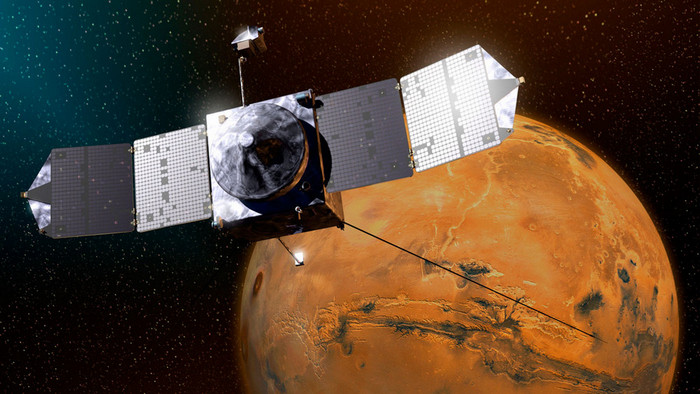NASA’s MAVEN orbiter, currently in its third year orbiting around Mars, could have abruptly ended its mission wasn’t for the witty engineers at NASA’s JPL.
Even though space collisions are very unlikely to happen, MAVEN – Mars Atmospheric and Volatile Evolution – was on a collision course with Phobos, the larger of two natural satellites orbiting Mars.

NASA confirmed this week that $600 million-worth MAVEN orbiter was on a collision course with Phobos, with NASA performing an unplanned maneuver in order to prevent the impact. The maneuver included the firing of MAVEN’s rocket engine in order to increase its velocity by 0.5 meters per second. The humble velocity increase is enough to change the projected path of the orbiter, pushing it away from the projected path of Phobos, ultimately avoiding the collision that would take place on March 6.
MAVEN Principal Investigator Bruce Jakosky made a statement in which he praises JPL navigation and tracking teams. “Kudos to the JPL navigation and tracking teams for watching out for possible collisions every day of the year, and to the MAVEN spacecraft team for carrying out the maneuver flawlessly.” Although the craft is in orbit around Mars for nearly three years, the maneuver is the first time the craft had to take action in order to avoid its destruction.
